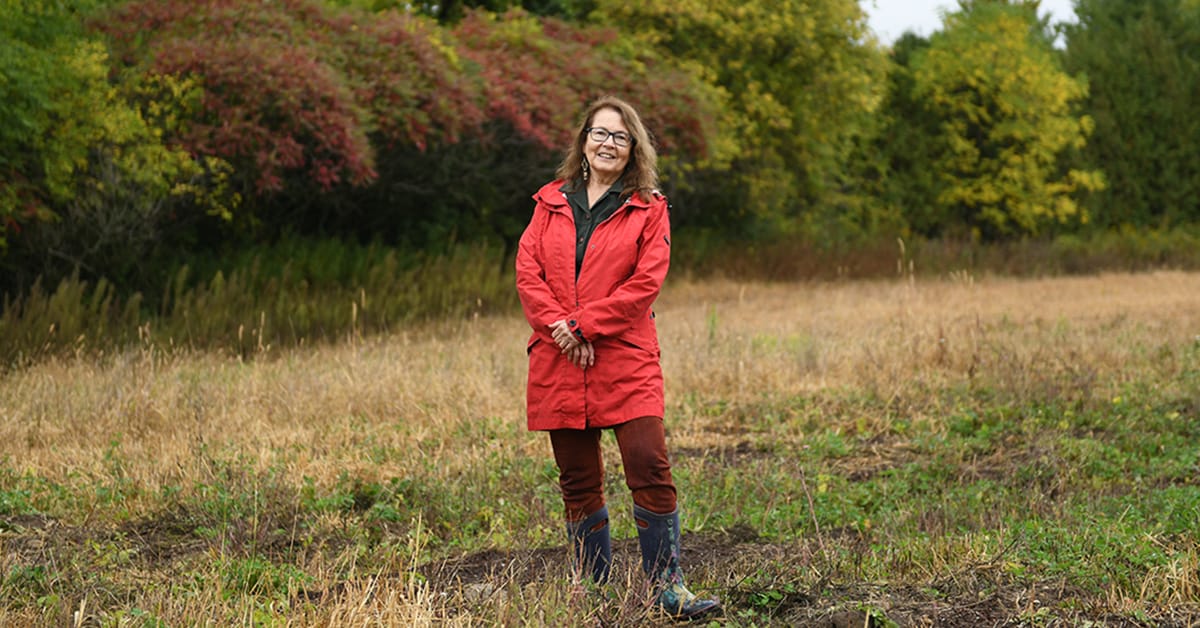A micro forest is being planted in Bloomingdale on Saturday and volunteers are still needed.
What is a micro forest? It is a method of planting trees pioneered in Japan to ensure maximum biodiversity in a small area.
Marjorie Paleshi is the chair of the organization All our Relations, which controls the property in Bloomingdale. Paleshi is working with the group To Thrive Together to build a community on the site where different generations can live in a community of small homes in a natural setting, with a particular focus on allowing elders to age in place.
“Because that property is right on the Grand River, and it actually is part of the Haldimand Tract – which is the Haudanausaunee, so the Six Nations, the Grand – it made me feel that I wanted to see this used in a good way,” Palieshi said.
“It’s a project of delight. And for what we can do for my grandchildren and for their children and their children and their children. That’s one of the reasons it’s being done.”
The space in question where the micro forest will be planted is a bit bigger than a tennis court, she says, where the group is planning to plant about 650 trees. Micro-forest plantings are specially designed to fit that number of trees in that sort of space, with the trees and plants supporting each other.
She and two other volunteers, Sharon Blom and Sharon Woodley, prepared the space over the last year with activities such as laying down multiple bags of collected leaves. They also arranged for Elmview Farms outside Wallenstein to apply a compost mixture of wood chips and horse manure to the site.
On Saturday, the site will finally be planted.
Paleshi is still looking for volunteers for the day from 10 a.m. to 1 p.m. and from 2-5 p.m. Food will be available. Paleshi is asking volunteers to email her to register (mdpaleshi@rogers.com), but even if people chose to come without registering, she asks that they come wearing sturdy footwear (no sandals), wear gloves and warm layers for the weather, bring a filled water bottle (though they will have water available to refill water bottles), and to bring a round-nose shovel if possible.
Micro forestry is a concept developed by a Japanese scientist, Akira Miyawaki in the 1980s. His method includes planting the species that make up the layers of a mature forest – including canopy, sub-canopy, small understory trees, and shrubs – densely into a richly prepared soil in a small area. This method is said to be able to establish a small, mature forest in about 20 years, when normally it takes about 200.
Paleshi says about a year and a half ago, she came across the group Little Forests Kingston, which is a volunteer group working to plant micro forests – which they call little forests – in their area. Nature Canada named this group conservation partner of the year in 2021 for their micro forest work.
Joyce Hostyn, a master gardener who volunteers with Little Forests Kingston, coached Paleshi through the process of planning and preparing the space for a micro forest in Bloomingdale.
Hostyn outlined the most important aspects of micro-forest planting.
“The soil preparation is probably the most critical thing because our urban soils are often depleted. They are very bacterial, a forest needs a fungal soil. They’re very low in organic matter, a forest needs high organic matter. So that forest floor preparation, and we use a no-dig method with some pretty thick levels of organic matter on top, and so that’s really number one.
“And then, secondly, is sourcing the species from a good nursery that grows their trees from seed from the south, southwestern, southeastern, southern Ontario seed zones.”
She also added that the community aspect is equally as important. She says encouragement and involvement from other community members is really what drives the group’s projects.
“It’s the relationships, the relational aspect of it. And not just relationships of people, but relationships of people with trees and all these other beings,” she said.
Funding for the Bloomingdale project was provided by grants from Wildlife Habitat Canada, the Sisters of St. Joseph, and the Region of Waterloo Community Environmental Fund. Along with the grants, community businesses helped with the project. Dominos Pizza, Bread & Bretzel Basket and Martin’s Family Fruit Farm are donating food for the event, Home Depot provided spray equipment for the application of the organic deer-deterrent, called Bobbex. The Bobbex was donated by a Canadian dealer, and flags and wraps, another way to protect the vulnerable trees from hungry critters, were donated by the Grand River Conservation Authority, says Paleshi.









